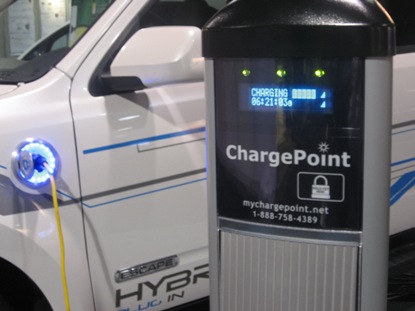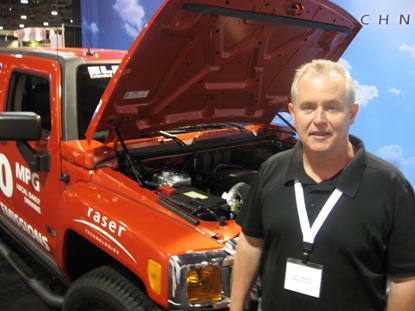Rob Schmitz heads KQED’s Los Angeles Bureau and is a frequent contributor to Climate Watch.
A Chevy that gets 230 miles to the gallon. A Hummer that gets 100.
Plug-in 2009, the 2nd annual industry conference in Long Beach, was wall-to-wall with such apparent oxymora. Just roving around the exhibition floor on Tuesday, I got the sense that our electric vehicle future is closer than I had originally suspected. I spoke to conference-goers who are already investing millions in what is assured to be an enormous infrastructure that’ll be built around these new cars.

I met Tom Tormey, Vice President of Technology at the Silicon Valley-based Coulomb Technologies. He raised a lot of important questions about where we’d charge these vehicles when we’re not at home. Of course, the answer came in the form of something he could sell you: car-charging stations. His company manufactures automated posts where you can use a credit card to charge up your car when you’re away from home or at work. He’s already sold dozens of these to cities across Europe. The stations will even help calculate taxes for the government through a network that hooks up to Coulomb’s servers here in California: a potentially big business for an electric future.
Speaking of big, check out the electric Hummer. If you thought this beast was nearing extinction (with the sale of Hummer to the Chinese and all), think again. With a new electric version that allegedly gets a 100 miles to the gallon, you may continue to see this American icon on our freeways.

Jim Spellman of Raser Technologies showed off the Hummer to me, complete with his company’s power train and electric generation system. He says they took it out for a test drive a few weeks ago and it ran 50 miles on electric power with 30% of the battery left to go.
With momentum building among the plug-in players, it’s not surprising that Mike Howard of the Electric Power Research Institute predicts there will be 16 million electric vehicles on the nation’s roads by 2030.
